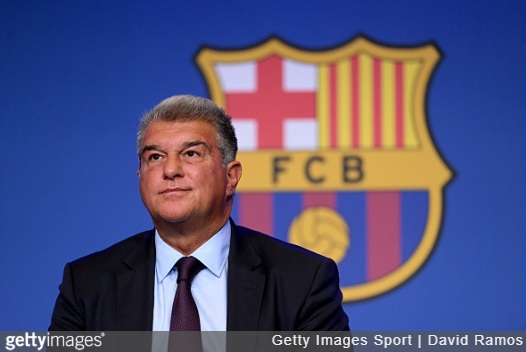Barcelona’s season was meant to open with a return to their iconic, newly modernized Nou Camp. Instead, as reported by The Times, the club finds itself preparing to host Valencia on Sunday in the modest surroundings of the Estadi Johan Cruyff, a 6,000-seat ground usually reserved for youth and women’s fixtures. It is a striking comedown for a club whose identity is so bound up with one of the world’s great football cathedrals.
The move has not only disrupted supporters’ plans but also raised broader questions about how such an institution can find itself in a position of uncertainty just days before a major league fixture. La Liga rules ordinarily require stadiums to hold a minimum of 8,000 fans, but an exception for “architectural reasons” allowed Barcelona to secure a late reprieve. Even so, officials from the league were dispatched midweek to inspect the venue, reviewing everything from electrics and access points to the installation of VAR cameras and a reliable wi-fi system. Only after these checks was the fixture given the final green light.
At the heart of the problem lies the Nou Camp redevelopment, an ambitious €1.5 billion project intended to increase capacity to 105,000 and secure the club’s financial future through modern match-day revenues. Barcelona’s leadership has repeatedly shifted its timeline for reopening, initially projecting a November 2023 debut before targeting the start of this season with a reduced 27,000-seat capacity. Neither plan materialized. Despite La Liga’s willingness to schedule Barcelona’s first three fixtures away from home in anticipation of the ground’s reopening, the city council has yet to sign off on a crucial construction certificate. Bureaucracy, not brickwork, has become the obstacle.
In a statement this week, the club insisted it was “working intensively to obtain the necessary administrative permits” and suggested that the first phase of construction is complete. Elena Fort, vice-president of institutional affairs, told Catalunya Radio that progress is being made but admitted there are no guarantees Barcelona will be ready for their next home fixture against Getafe on September 21. The uncertainty has led to speculation about contingency venues, including a possible return to Montjuic’s Olympic Stadium, which had been their temporary home for the past two seasons. But Montjuic is far from an ideal solution, both logistically and financially, and in this instance was unavailable because of a concert booking.
The Estadi Johan Cruyff may offer a short-term fix, but it is hardly a sustainable option. Its limited capacity means drastically reduced match-day revenues and awkward scheduling conflicts with the reserve and women’s teams. The sight of Barcelona, a club that brands itself as “Més que un club”, hosting a league game in such a diminutive arena is emblematic of the precarious balance between the grandeur of their ambitions and the realities of their current situation.
Financial considerations loom particularly large with the Champions League on the horizon. Barcelona are due to host Paris Saint-Germain on October 1 in what promises to be a marquee clash. UEFA’s regulations usually require clubs to play all home matches of a European campaign at the same stadium, though Tottenham Hotspur’s 2018/19 run — split between Wembley and their new ground — offers some precedent for flexibility.
Even so, the prospect of Barcelona being forced to host PSG away from the Nou Camp would be a severe blow, both in terms of prestige and revenue. Fort was adamant this week that no alternative venues have been considered, insisting the plan remains to return to Camp Nou in time for that fixture.
The handling of the Valencia game announcement has provoked criticism in the Spanish press. Confirmation of the move to Johan Cruyff came only five days before kick-off, leaving Valencia officials scrambling and away fans uncertain of their allocations. Just 290 tickets will be made available to visiting supporters, while Barcelona’s own season-ticket holders will be entered into a lottery for seats. Valencia winger Diego Lopez voiced frustration on Tuesday, calling it “incredible” that such a situation could remain unresolved so close to the match. His comments reflect a broader sense of exasperation at how Barcelona’s troubles have once again spilled over into the rest of Spanish football.
What should have been a season of renewal and optimism risks turning into another year of logistical headaches. The Nou Camp project is crucial to Barcelona’s long-term strategy, but the constant delays expose the fragility of a club still struggling to stabilize after years of financial mismanagement. While their rivals enjoy clarity and continuity, Barcelona remain in limbo — waiting on bureaucratic sign-offs, scrambling for temporary homes, and offering fans little certainty about where the next match will even take place.
The irony is sharp. A club that aspires to reclaim its place at the pinnacle of European football finds itself haggling over electricity tests and wi-fi installations at a training ground.
If the Nou Camp is ready in time for PSG’s visit, this chaotic start may be remembered as just another hiccup in a grand redevelopment project. But if delays persist, the questions about Barcelona’s capacity to deliver — primarily off the pitch — will only intensify. For now, the Estadi Johan Cruyff offers a stopgap solution, but it is a reminder that for one of the world’s biggest clubs, the path back to normality is proving longer, and more uncertain, than anyone expected.


